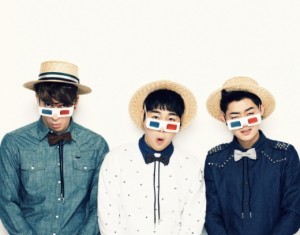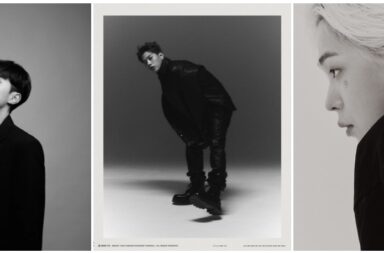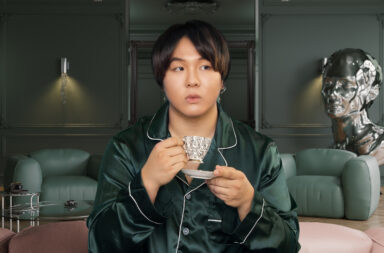 Here at Seoulbeats we have our K-pop Indie Gem segment, which sticks mostly to the parameters of independent Korean artists who have yet to enter the mainstream, both domestically and internationally. But with our recent roundtable discussion on the best indies of the year, we entered the gray area of what is “indie,” particularly within the context of our content and audience.
Here at Seoulbeats we have our K-pop Indie Gem segment, which sticks mostly to the parameters of independent Korean artists who have yet to enter the mainstream, both domestically and internationally. But with our recent roundtable discussion on the best indies of the year, we entered the gray area of what is “indie,” particularly within the context of our content and audience.
So Miyoko, Erika and I decided discuss the questions this raises: what exactly is “indie”? Does it describe production, genre, or popularity of an artist? Should we as members of the international audience have different standards for what is “indie”? And how does this all fit into the larger realm of K-music, idols and non-idols alike?
Leslie: To me, indie has always been a strange topic because even though it originally was used to describe artists who came from independent labels, it has grown beyond that to encompass artists that are lesser known and even become a way to describe a genre. The problem arises when we have groups who fit into one of the categories, be it genre, production or popularity, but not the others.
Take Nell for instance. The group is without a doubt indie for their musical style, but Woolim, now a subset of SM, is definitely not an independent label, and they are definitely not unknown.
What I have found to be a common characteristic among indie acts is the “artistic” factor. While what is considered artistic is heavily subjective, and we could sit here and discuss for days what that exactly is, I’d say that indie acts tend to have a focus on the artistic process — whether it’s composing music in a band or writing lyrics for a rap. While many artists that aren’t considered indie can have a hand — even a heavy hand — in the creative process in their music, it isn’t usually their image, but then again that applies more particularly to idols.
Miyoko: It’s definitely a subjective term. For my personal definition, I’ve tried to resist making indie a genre, because I find that many indie bands (i.e. bands who are independent or part of independent labels) produce music that falls within multiple music genres. However, I totally agree that “indie” can mean many things including a specific genre, with a specific sound, so I often find I have to qualify indie bands, like “indie metal,” or something.
I think being “artistic” is a big factor, for sure. However, I can’t get the “independent label” out of my definition of “indie.” So in the Nell example, while I absolutely love their style and think them very artistic, I think they’ve passed “indie” because they’re a part of a mainstream music label. But I also think “indie” is a huge part of their history and sound, so they’re still associated with it.
I guess the thing I’d like to bring into this discussion is “accessibility.” Indie bands are ones we consider “less popular” commercially, therefore less accessible — I mean that it’s harder to find their albums, not many people know about them, etc. (not in terms of emotional accessibility). I actually don’t think that just because someone is from an independent label, it automatically means they’re unpopular/unknown, but that is what is associated with them. So for K-pop fans outside of Korea, maybe because certain bands aren’t as accessible or visible, international fans lump them under indie. It’s difficult to know the local music scene when you’re not in the country, so in international fandom, “indie” becomes any band that is harder to find (and obviously not part of a major music label).
Leslie: I like what you said about qualifying indie because Lim Kim for example is what I would consider indie pop stylistically, but she’s not indie in any other sense of the word what with her mainstream success.
It’s interesting you’d bring that up about accessibility because one could argue that Korean music and the fandom as a whole is not particularly accessible for international fans despite the supposed attempts of the Hallyu wave, but that’s another discussion entirely. However, it still brings up the difficulty we have as international fans defining indie because often it’s reversed in terms of popularity and accessibility between idols and non-idols. The music made by idols, which makes up most of what our understanding of K-pop is, is consumed by a pretty finite audience in Korea — typically middle schoolers to high schoolers. But most other people in Korea don’t listen to idol music, at least not enough to be considered fans. They listen to everything else: ballad artists, solo artists, and the like, the stuff that international fans might consider “indie” just because they’ve never heard of them.
For instance, last year there was a huge upset in the international K-pop fandom of Exo fans vs. B.A.P fans for who was going to win the rookie award, but everyone was stunned when Busker Busker seemingly came out of nowhere and won. The truth of the matter is Busker Busker is not some unknown group but are actually HUGE in Korea whereas B.A.P and Exo at the time were relatively unknown.
[youtube http://youtu.be/tXV7dfvSefo]In terms of accessibility, that definition of indie makes sense though because idols are really the only ones that push internationally, making them the most accessible and thus not indie to international fans. However, we can’t just put everyone else into an “international indie” category because music isn’t as simple as idols and non-idols. Perhaps that’s the problem we have as a fandom in general: we think K-music is idols, idols and more idols when it’s quite the opposite.
I think that’s something we try to amend here at Seoulbeats by covering artists in between indie and idol. The difficulty is that we’re the bridge so it’s hard to say how we should define indie. We can’t exactly do the idol/non-idol taxonomy, but I don’t think we can stick as strictly to the domestic way of categorizing either because we still have to keep our audience in mind.
Miyoko: Yeah, I also don’t think the idol/non-idol split is the way to go.
I also feel like it’s easier to recognize idol groups, therefore it’s easier to categorize them. Plus they’ve got a ton of promotional activities, so they are highly visible even if they are a narrow slice of the music industry (which they are). But it makes idols a very strong “genre” against “everyone else” who can be put into multiple categorizes. However, there are many musicians that are clearly not idol, and clearly not indie, and the writers here do cover that music without calling it indie. So in a way it doesn’t seem like we should need to have this discussion.
However, it’s happening. I feel that we do, in a way, set up the idol/non-idol split because our focus is idols. We want to share other Korean music, but if the entry point is idol groups, then everything else will fall into the “non-idol” category because our idol coverage is regular, consistent. So when we talk about “best indie releases of the year,” but don’t have that in-between category, every band will get pushed into indie. Keeping the definition of indie loose allows for more artists to be mentioned, but then “indie” just means “non-idol” and we’re back where we started.
Erika: This discussion about indie is so timely, not just because we had a Roundtable on it, but because there has been a lot of talk recently in Western music about the purpose, value, intent, and success of pop music as art, and in particular as pop art, especially with Beyonce’s recent stealth album. It seems fitting that, as the Western music community ponders what makes art art, we consider what makes indie indie. I think the specifics are protean and situational, but there are some essential characteristics.
To me, it’s intent and content (and sometimes popularity/commercial backing) that separates indie from mainstream (in that order). Not all factors have to be in place, but these are the definitive ones. I agree that there is a concern with being artistic in indie music. So, the indie artist’s intent is artistic expression, and that artistic expression seems not to adhere the strictures laid out by mainstream aesthetics and perspectives. Generally, commercial concerns aren’t as important to indie artists.
I’d say the second most important factor is content—the actual sounds, the visuals, messages, etc. Of course, it’s through the content that the artist communicates his or her ideas and positions himself or herself inside or outside of the mainstream. Indie musical styles, lyrical ideas, MV concepts, etc. are usually (though not always) unlike what is popular. But, what musical styles or lyrical ideas are indie one day might be mainstream the next, so it’s the context and the intent of the artist that give the content meaning and help to define whether something is indie. This is why, to me, intent matters more than content.
I had to go general with my assessment of the whole “indie” situation because there are so many nuances and varied cases (like Lim Kim, as mentioned before, who has indie cred because of her style, but has the backing of a large company) for me to come up with any other criteria. Maybe there is a scale of indie-ness. Someone like Girls Generation would be at the least indie extreme of the spectrum, an artist like Lim Kim would be towards the middle, maybe someone like Okdal or Broccoli, You Too would be closer to the indie end.
[youtube http://youtu.be/Edht__Zv24U]Leslie: I hadn’t thought of this in the context of Beyonce’s album release, but it does make our discussion more relevant in the bigger picture.
I think that intent and content are the best ways to categorize much of what we’ve said but in broader terms. They really encompass the artistic factor and even the accessibility factor since indie artists’ intent isn’t to necessarily reach a mainstream audience thus making their music less accessible. The content serves as an umbrella to much of the conceptual part of what makes something indie, but as Erika said, this can change when removed from its context. And that would be why we have such a difficult time describing a musical style or genre or anything else as “indie.” It’s always changing.
I really like the idea of an indie spectrum. While we’re obviously not talking literally, as in making a chart with certain standards to measure the indie-ness of a song, it still makes it easier to approach instead of looking at music as categories, which is the norm. A spectrum leaves room for the gray area, and it also allows for a wider variety of artists to be analyzed on all of the different factors that weigh into what makes an artist indie.
I mean, I would never call some artists “indie” in its strictest definitions, but with the idea of a spectrum, I can consider where they’d fall. For instance, this gives room to idol artists who are known for their artistic pursuits on the pursuits, such as Junhyung from BEAST or Yonghwa from CNBLUE who are both well-known for their songwriting. While they’d likely be on the higher end of our indie scale, they definitely each have a greater artistic intent in their side work than either of their respective groups does.
Also, I think the idea of an indie spectrum makes it easier for us at Seoulbeats when we’re discussing an artist who is not an idol. It lets us explain more clearly what kind of artist they are without having to just say, “Well, they’re not an idol?” and leaving it at that. It’s simple and easier to understand than categorizing would be. It also allows for the loose definition of indie to which we seem to have arrived:
An indie artist typically has artistic intent at the forefront of their work, which can sometimes differ from the mainstream. This artistic endeavor can often be a result of being in smaller, independent companies which allow them more creative liberties, but this can also lead to less popularity though neither is necessarily implicit.
Miyoko: Room for change, flexibility, and gray area are necessary, I think.
For my last thought, I’d like to bring back the subjectiveness of “artistic” that was brought up earlier. I think people perceive indie artists as being more artistic, but who is to say that a pop musician is not artistic? Or that artistry does not go into their work? Just because someone makes money and has lots of commercial exposure, that means they do not have artistic expression? I know “intent” becomes muddled when more people (i.e. companies) control more aspects of the whole package, but I do think we could argue all day about who has artistic intent and who doesn’t.
Do you agree or disagree? What do you think makes an artist “indie”? Leave your comments below!





